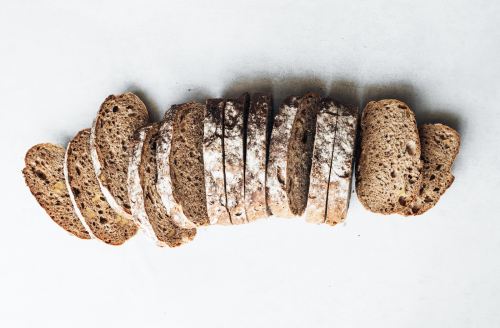Cutting out gluten has never been more mainstream than it is today (popular eating plans like Whole30 and Paleo require it), but for what? In the latest installment of our YouTube series You Versus Food devoted to debunking nutrition myths, registered dietician Tracy Lockwood-Beckerman gets real about the doughy proteins in our carbs.
First off, gluten is a protein found in wheat, and it serves a real purpose in food. As anyone who watches The Great British Baking Show knows, gluten gives wheat bread its structure. “Think of gluten as the glue that holds together your favorite wheat-based treats,” Lockwood-Beckerman says.
There are some people who genuinely cannot eat gluten—but those numbers are pretty small. Lockwood-Beckerman says just 1 percent of the population has been diagnosed with celiac disease (about 3 million people), an autoimmune disorder that renders your body unable to process gluten. Meanwhile, about 6 percent of the population (as many as 20 million people, she says) have non-celiac gluten sensitivity, when people test negative for celiac but still have some digestive issues when eating gluten. This is a pretty new phenomenon, she says, and thus hasn’t been researched a ton.
For those people, cutting gluten makes total sense. But for everyone else… Lockwood-Beckerman has some real talk. “Going gluten-free is just for gluten-free’s sake is as much of a trend as fanny packs or those tiny useless sunglasses that everyone seems to be wearing,” she says. “It’s possible you’re losing out on some valuable nutrients.” Those include folate, B vitamins, and iron.
Her gluten-filled go-to’s? Anything with a low glycemic index (meaning it will have less of an effect on your blood sugar), or breads with whole grain or whole wheat flour as the first ingredient. She also recommends cutting back on the Girl Scout Cookies and enticing coffee shop pastries to save yourself from a mid-afternoon crash.
When it comes to gluten, Lockwood-Beckerman says, the slice is right for most people. Whew! To learn more (and to count all of her bread puns) check out the full video above.
Here’s how cutting gluten can potentially affect your gut. And for people with celiac disease, there may be a vaccine available soon.
Sign Up for Our Daily Newsletter
Get all the latest in wellness, trends, food, fitness, beauty, and more delivered right to your inbox.
Got it, you've been added to our email list.











